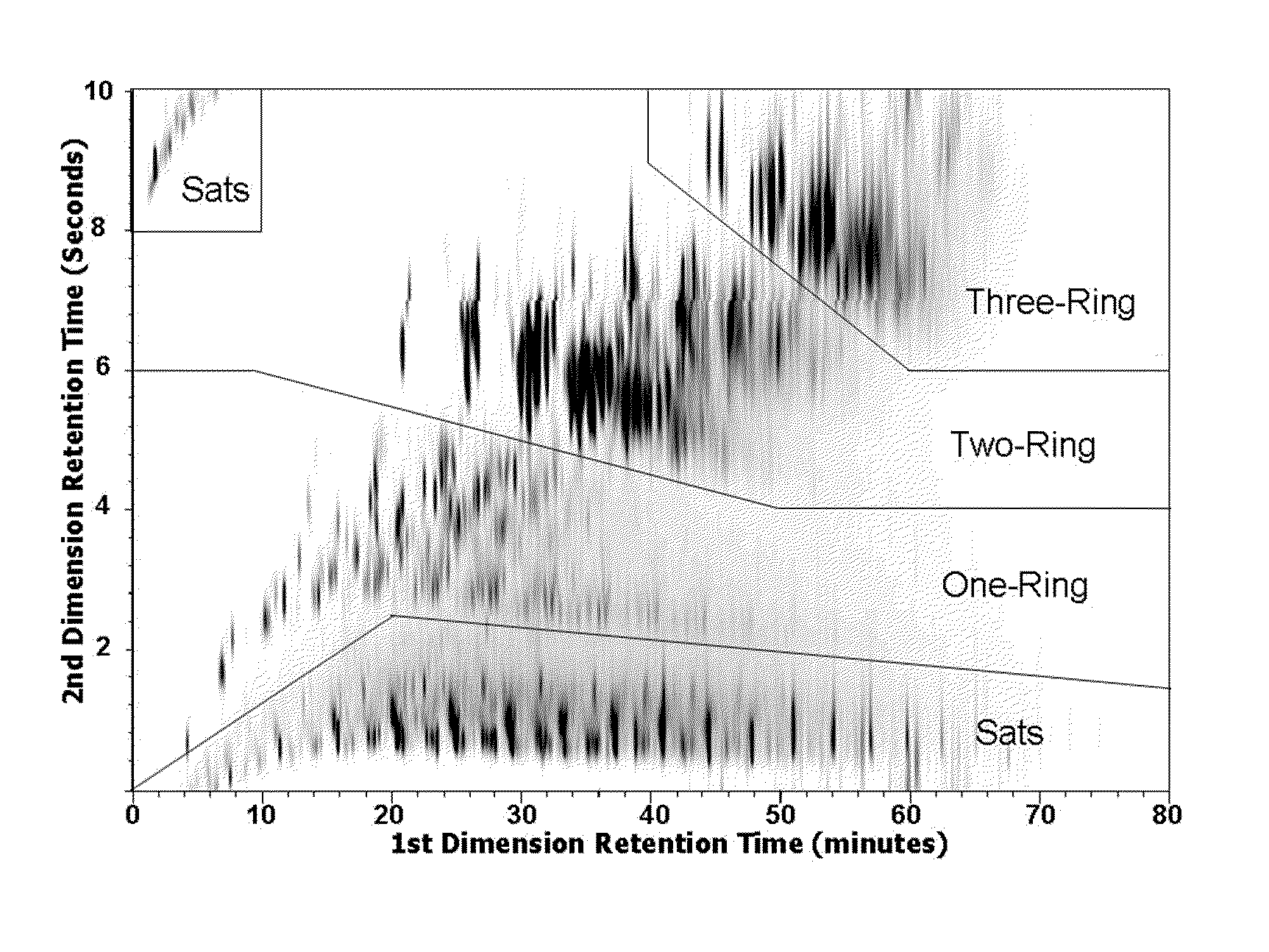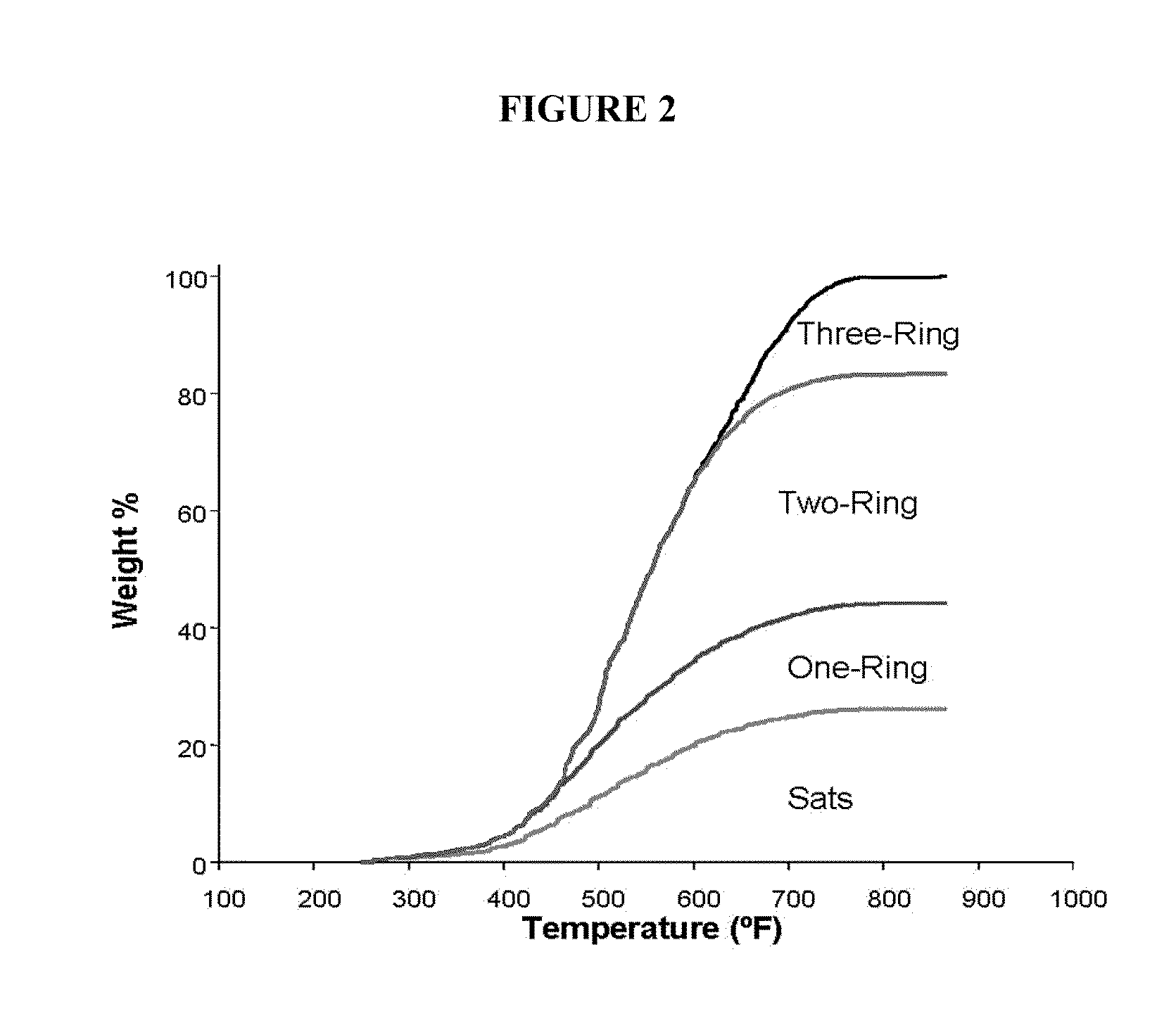Simulation distillation by comprehensive two-dimensional gas chromatography
a gas chromatography and simulation technology, applied in the field of petroleum or refinery stream characterization, can solve the problems of relatively slow and costly distillation at the lab scal
- Summary
- Abstract
- Description
- Claims
- Application Information
AI Technical Summary
Benefits of technology
Problems solved by technology
Method used
Image
Examples
example 1
[0013]GC×GC or 2DGC-FID chromatogram of a hydrocarbons mixture in the diesel temperature boiling range.
[0014]FIG. 1 shows the GC×GC (or 2DGC) of the hydrocarbon mixture boiling in diesel temperature range. The figure shows separation of saturated hydrocarbons from 1, 2 and 3 ring aromatic hydrocarbons.
[0015]The X-axis can be converted from retention time in FIG. 1 to temperature in FIG. 2. The X-axis in FIG. 1 is the first column retention time. As described previously, the first column (of the GC×GC) is a non-polar column. The elution of the non-polar column is based on the boiling point of the compounds. A separated n-paraffin mixture (for example, from n-hexane (C6) to n-Tetracontane (C40)) is prepared. This mixture is analyzed with GC×GC at the same condition as running simulated distillation sample. A chromatogram with only n-paraffins will be obtained and each n-paraffin has a unique retention time. Because the boiling point of each n-paraffin is well known, the retention time...
example 2
[0018]If a sulfur chemiluminescence detector (SCD) is attached to a GC×GC (or 2DGC) or integrated with existing flame ionization detector, the breakdown of sulfur species by compound class or type can be determined. Similarly, as described above for the hydrocarbon (FID) detector signal, the sulfur signal from the 2DGC can be used to generate simulated distillation curves for individual sulfur molecular types.
[0019]The signal intensity of the sulfur chemiluminescence detector (SCD) can be converted to mole percentage of sample analyzed. The SCD signal intensity is direct proportional to the number of sulfur atoms in the component detected. For the sulfur atom containing hydrocarbons, most of them only have one sulfur atom in each component, this signal intensity is direct reflect to the relative mole of that specific component. By normalize the relative signal intensity (relative mole), the signal intensity can be converted to mole percentage (single SCD intensity divided by total S...
PUM
| Property | Measurement | Unit |
|---|---|---|
| boiling point | aaaaa | aaaaa |
| temperature | aaaaa | aaaaa |
| sulfur chemiluminescence detector | aaaaa | aaaaa |
Abstract
Description
Claims
Application Information
 Login to View More
Login to View More - R&D
- Intellectual Property
- Life Sciences
- Materials
- Tech Scout
- Unparalleled Data Quality
- Higher Quality Content
- 60% Fewer Hallucinations
Browse by: Latest US Patents, China's latest patents, Technical Efficacy Thesaurus, Application Domain, Technology Topic, Popular Technical Reports.
© 2025 PatSnap. All rights reserved.Legal|Privacy policy|Modern Slavery Act Transparency Statement|Sitemap|About US| Contact US: help@patsnap.com



